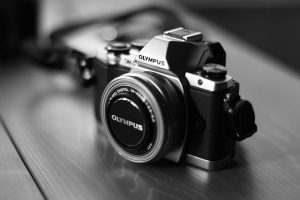Converting to Black & White Photography
Most all photographs, whether film or digital, are originally taken in color. Thanks to a wide variety of editing software, converting these photographs to black and white is very simple. However, there are still many different ways to do so.
Converting to Black & White Photography
 As a professional photographer, I use Photoshop CS3 for all my editing. To convert a color photograph to black & white photography, you can either use the grayscale or the desaturate adjustment. If you are working with digital images, try to use the RAW format setting in your camera if your computer supports it (check first, as not all programs recognize this file type). Although RAW files are larger, they will yield less of a ‘grainy’ image when converted to black and white. Remember, although I’m sure your camera has a black & white photography setting, ALWAYS shoot in color and convert it later.
As a professional photographer, I use Photoshop CS3 for all my editing. To convert a color photograph to black & white photography, you can either use the grayscale or the desaturate adjustment. If you are working with digital images, try to use the RAW format setting in your camera if your computer supports it (check first, as not all programs recognize this file type). Although RAW files are larger, they will yield less of a ‘grainy’ image when converted to black and white. Remember, although I’m sure your camera has a black & white photography setting, ALWAYS shoot in color and convert it later.
If you don’t have (or can’t afford) Photoshop, you will find that almost all editing software will have a black & white option, either by desaturation (in color adjustment) or simply clicking a button. Most websites that offer photograph printing will also allow you to print the photograph in black and white, and let you view it first before ordering.
When working with 35mm, you have to option to buy “Black and White” film. However, I recommend that you stick with color film. You have more options that way, and you can always ask that the film be developed in both a set of color and a set of black and white. Having used both, I get better looking black & white photography from converting my color film than from actual black and white film.
How many times have you looked outside to see a dreary, overcast sky? At first glance, this may seem all wrong for pictures. But when it comes to shooting Black White photography, it is absolutely perfect.
Capturing the Purest of Black & White Photography
To capture the purest essence of Black & White photography, lighting is key. The black and gray elements in your photograph are much more important than the white. If your lighting is too harsh, the picture will be look washed out (unless, of course, if that is the concept you are looking for). Anything you desire to photograph outdoors with the intention of converting to black & white, whether it be nature or people, should always be performed on an overcast day. While direct sunlight can sometimes be beneficial in color photographs, it is all wrong for black white photography.
If you are shooting indoors, it is crucial for the lighting to be both soft and indirect. Aim to use soft, natural light if possible. If you prefer artificial lighting, never use a direct flash. Instead, use umbrella lights. Don’t fret if you don’t have any, you can always point your flash to bounce off a piece of white poster board, or even a low ceiling to achieve the desired results.
What if you don’t have a detachable flash or lighting equipment? Another trick I learned is to simply hold a film negative over the flash on your camera. This will act as the perfect diffuser. Although I do have both an aftermarket flash and lighting, I still use this method on occasion when shooting black white photography because of the results it yields.